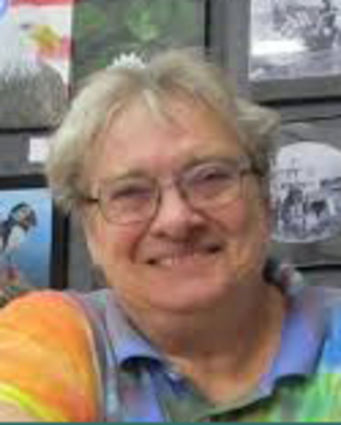Happy holidays
On the Bright Side
December 8, 2018

As a child, thanks to my mother’s never-ending desire to learn all about other peoples and other religions, I found out that while I was totally and enthusiastically (and sometimes single-mindedly) enthralled with Christmas, there were also a number of other holidays being celebrated in that special time between Thanksgiving and the end of the year. I was, however, simply all about getting presents.
As I grew older, I came to understand more about the spirit of Christmas and the meaning of the Christian season as my family celebrated and as my church defined it – the birth of the Christ, the Prince of Peace, giving to others, spending time with family and other dear ones and coming together to celebrate with food and drink. And I continued to learn even more about other holidays during the season.
Actually now, even as I’m officially an old lady (according to my birth certificate, which designates me as a senior citizen), I am still learning about other people’s holiday celebrations. And I am even more intrigued by how many different ways people can ultimately, even with different definitions and different words and different faiths and different beliefs, celebrate so much of the same things and share so much tradition.
Since ancient times, all sorts of cultures around the world have celebrated the winter solstice – the shortest day and longest night – of the calendar year (in our hemisphere it is Dec. 21, which is also the designated beginning of winter). Ancient peoples created religious and ceremonial traditions around that day to “celebrate the rebirth of sunlight after the darkest period of the year,” like the Romans, who celebrated Saturnalia – a week long feast – to honor the god Saturn. Pagans and Wiccans still celebrate through Yule, which honors, “the winter-born king, symbolized by the rebirth of the sun.”
In fact, most historians believe the Christmas holiday was created by Pope Julius I in order to incorporate the Christian holiday into already accepted celebrations. Many of our Christmas traditions today can be traced back to pagan winter solstice origins, i.e. similar holiday décor like evergreen wreaths, holly and mistletoe, and putting up green, red and white decorations to celebrate the season.
Hanukkah (a holiday commemorating the Maccabees’ victory over the Syrians in 165 B.C. and the rededication of the Holy Temple) is also known as the Festival of Lights. The Talmud tells us that during the rededication of the temple, there was only enough oil to keep the ceremonial menorah lit for one day…but the menorah burned for eight days, and Jews continued to celebrate with an eight-day festival, which includes lighting candles, giving gifts and eating traditional foods.
More recently, Kwanzaa was created in 1966 to celebrate African American heritage and uses traditions from several tribes in Africa. The holiday is basically a seven-night celebration with families gathering each night to discuss one of the seven principles (called the Nguzo Saba): unity, self-determination, collective work and responsibility, cooperative economics, purpose, creativity and faith. As with Hanukkah and Christmas, Kwanzaa is a celebration that includes family, feasts, music and dancing, lighting candles and exchanging gifts.
(And let us not forget Festivus – “a holiday for the rest of us” – created by a writer on the Seinfeld show. It was explained in an episode of the sitcom by the Constanzas as a holiday that removes commerce and religion and gets ever more bizarre from there.)
There are more: Islam celebrates Mawlid el-Nabi in November, honoring the birth of the Prophet Muhammad; Advent begins the end of November for Orthodox Christians, a celebration that includes candles, wreaths and religious services; Dec. 6 is the Christian St. Nicholas Day, honoring the birth of Saint Nicholas, the role-model for gift giving (and, of course, for Santa Claus); for Catholics, Dec. 8 is Immaculate Conception Day, to honor Jesus’ mother Mary, and Dec. 12 is the Feast of Our Lady of Guadalupe for primarily Mexican Americans (for a day when the Virgin Mary made an appearance in Mexico City): Zarathosht Diso (Dec. 6, honoring the death of the prophet, Zarathustra, who founded Zoroastrianism, one of the world’s oldest monotheistic religions; and Holy Innocents Day (Dec. 28), Christians honor the death of children killed by King Herod in his attempt to kill the Christ child.
There are even more, as I’m always learning (not to mention many different ways to celebrate any of the given holidays around the world), but so many of them have in common a way to celebrate a special occasion or event, with loved ones, with special food and gifts, music and decorations, and a reminder of peace and joy and gratitude. Even as different as we all seem to be, we are all also so much the same.
No matter how or what you celebrate, I wish you all a happy, happy holiday season.
© Copyright 2018 Marilda Mel White Tehachapi writer/photographer and co-owner of the Treasure Trove, Mel has always loved a celebration of any kind. She welcomes your comments at morningland@msn.com.




